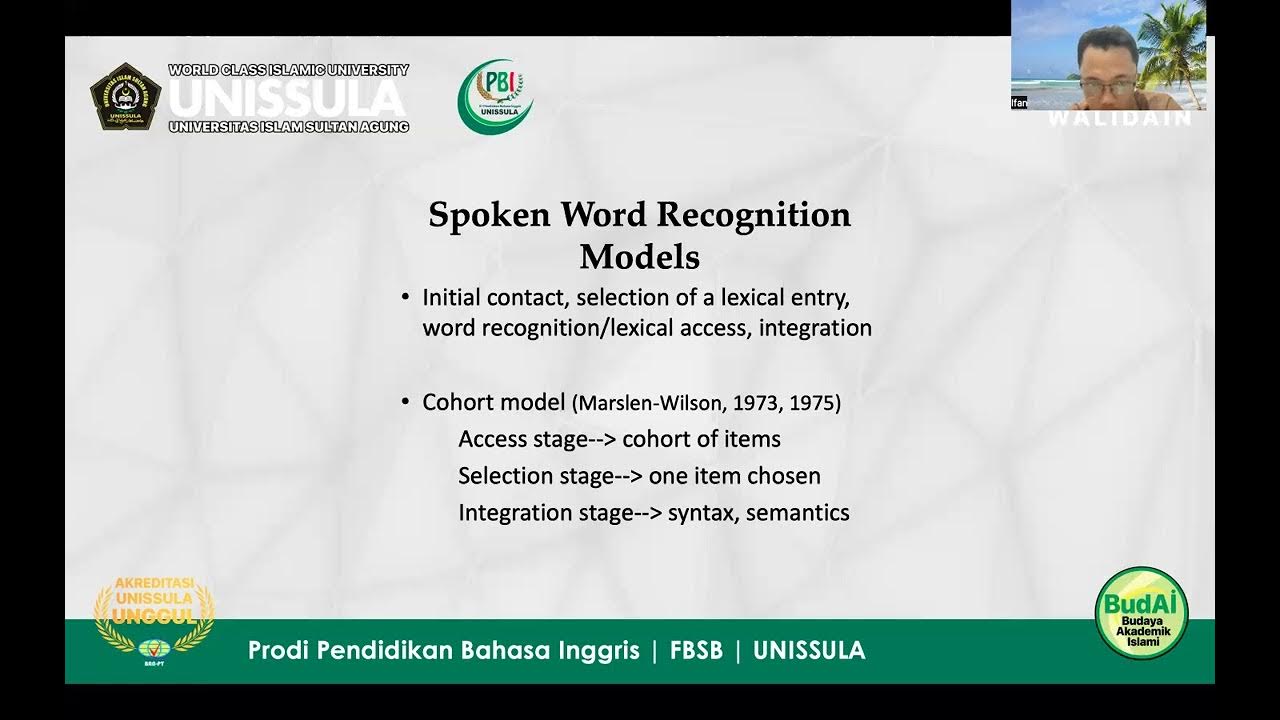Five Stages of Second Language Acquisition SLA
Summary
TLDRThe transcript outlines the five stages of second language acquisition as proposed by linguist Stephen Krashen. These include the pre-production or silent period, early production, speech emergence, intermediate fluency, and advanced fluency. Each stage is characterized by specific learner behaviors and requires tailored teacher responses, such as providing a low-anxiety environment for early speakers and focusing on learning strategies for intermediate learners. The time spent in each stage varies, emphasizing the importance of individualized language learning.
Takeaways
- 📚 The five stages of second language acquisition are identified by linguist Stephen Krashen.
- 🔍 The first stage, pre-production, is a silent or receptive period that can last from hours to months.
- 🌟 In the pre-production stage, learners focus on vocabulary acquisition and pronunciation practice.
- 💬 Stage two involves early production, where students begin to respond with short utterances and one or two-word answers.
- 🗣️ Speech emergence, the third stage, sees students with a vocabulary of about 3,000 words, capable of simple phrases and sentences.
- 📈 Intermediate fluency is stage four, where students have a vocabulary of around 6,000 words and use more complex sentences.
- 🎓 Advanced fluency is the final stage, taking 4-10 years to achieve, with students nearing native-like abilities in content area learning.
- 🚫 Direct error correction is inappropriate during the early stages, as students are experimenting with the language.
- 👨🏫 Teachers should model correct responses and provide a low-anxiety environment for language production.
- 📊 The length of time spent in each stage varies greatly among individual learners.
- 🔁 Teachers should focus on learning strategies and support students in understanding complex concepts and content areas.
Q & A
What are the five distinct stages of second language acquisition as proposed by linguist Stephen Krashen?
-The five stages of second language acquisition according to Krashen are: 1) Pre-production or Silent/Receptive Period, 2) Early Production, 3) Speech Emergence, 4) Intermediate Fluency, and 5) Advanced Fluency.
How long does the Pre-production stage typically last for second language learners?
-The Pre-production stage may last from several hours to several months, depending on the individual learner.
What are the characteristics of student behavior during the Pre-production stage?
-During the Pre-production stage, students typically learn vocabulary, practice pronouncing new words, and may engage in self-talk without speaking the language fluently or with real understanding.
What is the main focus for teachers during the Pre-production stage?
-Teachers should model and demonstrate correct responses in context, and avoid direct error correction as students are experimenting and taking risks with the new language.
What is the significance of the Early Production stage in second language acquisition?
-In the Early Production stage, students begin to respond with one or two-word answers or short utterances, indicating their need to express themselves and the start of their language production.
How many words do students typically have in their vocabulary during the Speech Emergence stage?
-Students in the Speech Emergence stage have developed a vocabulary of about 3,000 words.
What can students do at the Intermediate Fluency stage in terms of language use?
-At the Intermediate Fluency stage, students have a vocabulary of around 6,000 active words, use more complex sentences, express opinions, and share thoughts. They also ask questions to clarify learning and use strategies from their native language to learn content in English.
How long does it take for students to achieve Advanced Fluency in a second language?
-It takes students from four to ten years to achieve cognitive academic language proficiency in a second language, which is the Advanced Fluency stage.
What is the role of classroom teachers for students at the Advanced Fluency stage?
-At the Advanced Fluency stage, while students may no longer need English as a Second Language support, they will need to continue receiving support from classroom teachers, especially in content areas such as history or social studies and in writing.
How does the length of time spent at each stage of second language acquisition vary among students?
-The length of time each student spends at a particular stage of second language acquisition may vary greatly, as each learner's pace and experience with language acquisition is unique.
Why is it important for teachers to understand the stages of second language acquisition?
-Understanding the stages of second language acquisition helps teachers tailor their teaching methods to the students' current language proficiency level, providing appropriate support and challenges to facilitate effective language learning.
Outlines

This section is available to paid users only. Please upgrade to access this part.
Upgrade NowMindmap

This section is available to paid users only. Please upgrade to access this part.
Upgrade NowKeywords

This section is available to paid users only. Please upgrade to access this part.
Upgrade NowHighlights

This section is available to paid users only. Please upgrade to access this part.
Upgrade NowTranscripts

This section is available to paid users only. Please upgrade to access this part.
Upgrade NowBrowse More Related Video
5.0 / 5 (0 votes)





